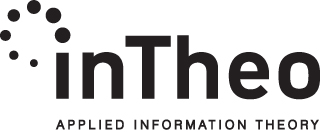
![]() Download PDF
Download PDF
Enterprise Intelligence –
A lone wolf activity or a corporate capability?
One can find them in any company, the “lone wolves of intelligence”, i.e. individual subject matter experts with a mandate “to keep themselves updated” but with no, or very limited, communication with the wider organization around them. They do a fantastic job in information gathering and specialist skills development and they even reduce the risk of market and technical errors, but is that really intelligence operations in its true meaning? This paper argues that it is not and aims at providing some fundamental supporting arguments that say that Market & Competitive Intelligence need to be deployed and managed as a strategic corporate capability, including but not limited to, embracing the good old principles of communities of practice.
Background
– Not to worry, I’ve got Peter here! He is an internationally acclaimed specialist in his R&D domain, and he makes sure we do not miss out on any important news for our product development.
– Right, and over there is Raj doing the same thing within his field, I suppose… (and so on). Do they ever talk to each other?
– Rarely! After all, they know little about each other’s domains of expertise.
– Do they ever talk to anyone in the strategy or marketing units?
– Sorry, what was that you just said??
Indeed, this is an extremely simplified stereotype dialogue but, nevertheless, the essence of which I am positive many an intelligence analyst or manager have encountered in various forms and with a varying degree of frequency over the years.
They are many, the “lone wolves of intelligence” out there and for sure, they contribute tremendously to their immediate teams or knowledge groups with updates, new patent data, competitor conference findings, specific research news and alike, but is that intelligence? I’d say not! It is regular team competence and skills development. It is, without a doubt, critical to any long-term business operations, but that does not make it an intelligence operation.
– But what if we make sure to have one of these “lone wolves” in every single discipline through the organization?
– Nope, still not an intelligence operation! The missing link is that of shared context.
Shared context
The above background was just to illustrate what I many times have found to be a recurring frustration among intelligence professionals trying to secure both budgets and staff for a more structured intelligence approach, only to receive management responses such as “But we have Pete”, and “We use Google news, is that not enough?”. The essence of such counter arguments is that someone has a mandate to keep track of some given topics at hand, and that that is often perceived as sufficient. So, why is it not? The following are some key arguments for replacing, or evolving, the “lone wolf strategy” with a cross-disciplinary intelligence capability.
Purpose
Why are we doing this? The lone wolf answer would typically be “because my boss has asked me to keep track of this”. However, the likeliness that that “this”, at least in any reasonable way, is linked to an overall corporate strategy is minimal. Such mandates are, more often than not, very siloed while in order for an intelligence apparatus to be of any real value, it has to have a shared and communicated purpose for all to relate to.
Comparability
Critical capabilities of any intelligence apparatus are those of benchmarking, trend analysis and rapid decision support. However, for such an intelligence apparatus to work, all underlying data and information must follow common structures, models and synthesis procedures. For those working with Key Intelligence Topics, the “questions to be answered” must be identical throughout the organization. It goes without saying that in a lone wolf landscape, none of that exists.
Predictability
An intelligence operation is an ever-ongoing mix of long-term strategic work and rapid tactic decision support. For this to work, the organization needs a significant level of predictability on topics such as “What ought we know about this?”, “Who can do this now?”, “What should we expect?” etc. To be able to answer such questions, there must be a “systemized memory” in the organization based on common experiences.
Foresight frameworks
When put to the test, there is one key capability of intelligence operations that should take precedence over all and that is foresight, i.e. making sure that the organization is never taken by surprise when the future knocks on the door. For that, the intelligence apparatus needs widely agreed views on trends and scenarios, involving different and sometimes contradicting specialists in the analysis and intelligence work. With lone wolves that can never happen.
Team insights
The concept of team insights can take on many forms but the one contemplated here is that of the ability of spotting “discontinuities” or “the unexpected” when undertaking such daily mundane activities as reading the morning news. The challenge is that unless one knows what to expect, it is impossible to argue that something is unexpected. The team insights are those that form the “joint map of the expected”. With lone wolves…. Well, by now you get the gist of this.
The list of shared context factors can be made longer but the purpose here is just to inspire dialogues on how to begin a journey towards a more capability-based intelligence operation. It is very likely that most readers of this will say “Yes, but we are, kind of, on our way”. Although probably correct, the risk is that such statements carry with them a certain level of complacency, and that that, in turn, will delay or hinder actions to leverage the otherwise so readily available potential of the organization’s still scattered, but highly qualitative, intelligence resources.
Lone wolves and subject matter experts
A key resource of any intelligence operations is its internal, as well as external, network of subject matter experts. These are the individuals that have a high level of expertise in very particular fields of their own mandates. It can be specific technologies, geographical markets or regions, governance matters such as patents or finance, or, among the intelligence professionals themselves, intelligence analysis models and tools. All these subject matter experts are imperative for successful intelligence operations.
But…, hang on a minute, are not many of these the lone wolves that we just discarded as inefficient? Well spotted! But… we never said that they, as individuals, are inefficient – it is the context in which they work that is faulty.
The key to success is to identify as many lone wolves of intelligence as possible and gradually provide them with a wider context to operate within, thus transforming them into a corporate subject matter expert resource that contributes to the overall intelligence aims of the group. The challenge lies in the “context provisioning”. A functional analogy is to view the organization, with all its positive treats and resources, as hindered in its smoothness by a vast range of frictions that need to be dismantled. In machineries, unwanted frictions are remedied with lubricants so let’s think about our intelligence capability operations as a communications lubrication activity.
Lubrication models and tools
Potential organizational friction factors are many and perspectives may vary but, for the purpose of this short thought exercise, lets take the viewpoint of one of our lone wolfs. Why is he or she not more engaged with the overall intelligence context? What are the frictions that we might be able to address? The following is a non-exhaustive, yet actual, list of real lone wolves’ answers to these questions.
- Not aware of any overall collaborations outside my field.
- Those times I’ve had something I thought might be of interest, I never knew who to tell.
- Not my job to spend time on the problems of others’. In particular, my boss would not like that.
- Why would anyone outside my field be interested in what I know?
- This is how we always have worked.
- I have never worked with any of those models you are talking about.
- I’ve heard about some of those models but do not know how to apply them in my daily job and in this company.
We could go on with further variation on this theme, but the bottom line is that there is an almost complete disconnect with any people network outside the immediate sphere of interest.
However, when asked if it would be beneficial, and even more fun and rewarding, to become part of such networks, experience says that very few, if any, would respond with anything but a clear Yes!
That is good news! “All” we need to do is to lubricate our intelligence apparatus by deploying a common “analysis language” with shared terms and models, adding to this a deliberate “connectivity development” that enables the lone wolves to get to know each other and also to become aware of the intelligence center, its mandates and support. In other words, to gradually develop a cross-organization intelligence community of practice.
Significant gains
The gains of this approach are many, not least for the (previously) lone wolves that will experience wider contexts, new career routes and a new people network. This adds immense capabilities to their personal “toolbox” in their role as the local subject matter expert. For the general intelligence community, adding this skills base in a structured way obviously increases the intelligence capability by magnitudes.
Yet, as we all know, Rome wasn’t built in a day but at least we have a sense of what kind of values that are forgone when we continue to pursue a “lone wolf intelligence strategy”, and we also know fairly well how to convert that disconnected group into a well performing team of intelligence resources. We just need to do it.
Where to start?
Where to start is obviously a very open question and the answer highly dependent on current status as well as relevant organizational factors. All in all, though, my experience is that a very good starting point is to review current analysis models deployed in the different corners of the “intelligence organization”. Models have the strength of being good frameworks for further dialogue. If you begin to get a joint agreement on which models to use for different types of analysis, it is also highly likely that you will see an increased communication between those working with similar models. With given models at hand, the next step is typically to start sharing information that fits these models. Soon you will also find yourself with one or more software tools at hand that support such structured information exchange.
Whatever perspective you start with, the most important advice is to actually get started!
